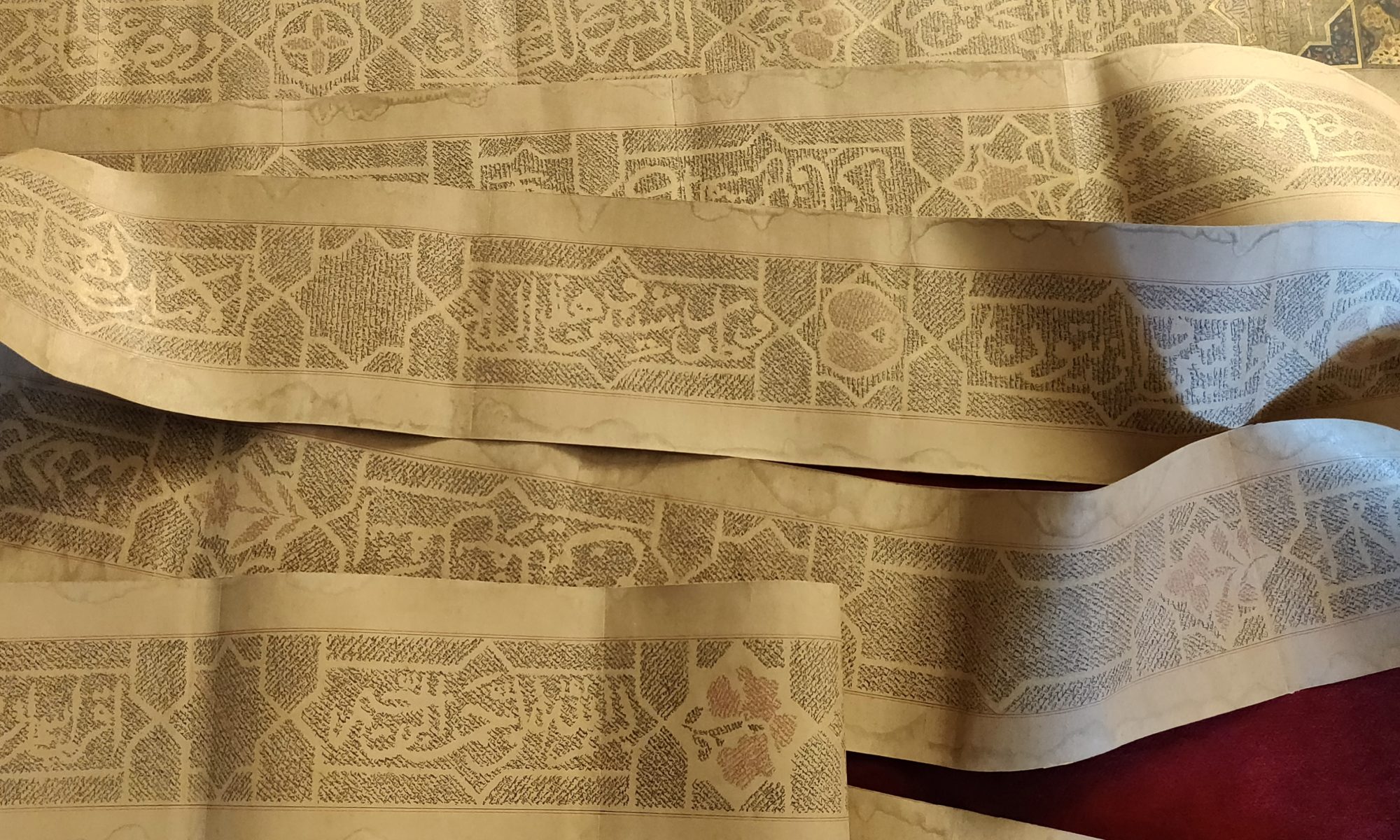Title: Kashf al Fadha’il fi Sharh Shama’il li Tirmidhee| كشف الفضائل في شرح الشمائل للترمذي
Author: Noor bin Muhammad bin Hussayn Al Kashaani An-Nu’maani (d. late 9th or 10th century Hijri?) | نور بن مُحَمَّد بن حسين الكاشاني النعماني
Biography: Unknown | مجهول
Scribe: Unknown | مجهول
Date: 966H | 1558CE
Script: Naskh
Size: 20.3 X 13 CM
Folios: [2]+ 206ff. + [2]
Description: 21 Lines/Page | Arabic Laid paper, watermarks were not observable due to the condition of the paper | Black ink with rubrication of حدثنا and overlining the Matn of Shama’il. | The hawaashi are in Nasta’liq script| The final folio (verso & recto) is a summary of the birth and death of the Prophet صلى الله عليه وسلم | The pages are severely damaged by worms and termites with mostly the first few folios suffering loss of text. Even though the manuscript has been damaged thoroughly, most of the text is legible and unaffected. The binding appears to be the original and has disconnected from the spine, but is still sewn into the quires. | This manuscript is complete. |
Incipit: الحمد لله الواجب الوجود بالدلائل ، الشاهد على وحدانيته وجود الأواخر والأوائل
Explicit: ولعل وجه إيرادهما في آخر الكتاب الترغيب في الحديث والاختتام بما يناسب المقصود كما في الافتتاح
Provenance: There are two seals on the first folio’s title page and these two seals appear on the final folio as well. The smaller seal is difficult to decipher. The larger seal is of Muhammad Shah, dated 1132H/1719CE and is likely the seal of the Mughal Emperor Muhammad Shah
Research Notes: This is rare explanation of Ash Shama’il of At-Tirmidhi. The author states in his introduction that he read this book to and heard it from some of the major and noble scholars and he put this book together to benefit people based on requests and that he didn’t find much written on this work. In the introduction, the author mentioned “ابو النصر مظفر شاه السلطان” “Abu Nasr Mudhaffar Shah as-Sultan [..]” * The Süleymaniye manuscript states: ابو الفتح (Abul Fath)- It is likely that it is referring to the Habashi ruler of Bengal, Abu Nasr Mudhaffar Shah, who ruled from 896H to 899H. So we can date the lifetime of the author to the late 9th or early 10th century Hijri- making this manuscript either: written by him or during his lifetime or soon after his death.
This manuscript is not published| Fuat Sezgin recorded that a manuscript of this work is in the Süleymaniye Kütüphanesi [Süleymaniye library] in Istanbul (Accession # 267) with 268 pages (complete) and written sometime in the 11th century Hijri (Tarikh At-Turath Al ‘Arabi, 1/158). Abdullah Muhammad Al-Habashi records an entry citing Sezgin and Brockelmann’s entry of the Süleymaniye manuscript (Jaami’ ash-Shuruh wal Hawashi, 2/1110). I could not find Brockelmann’s entry. The Arabic catalog of manuscripts in the Süleymaniye library (pg. 411) notes that this is the only manuscript of this work that is known to us.
Accession #: Ms.124c

